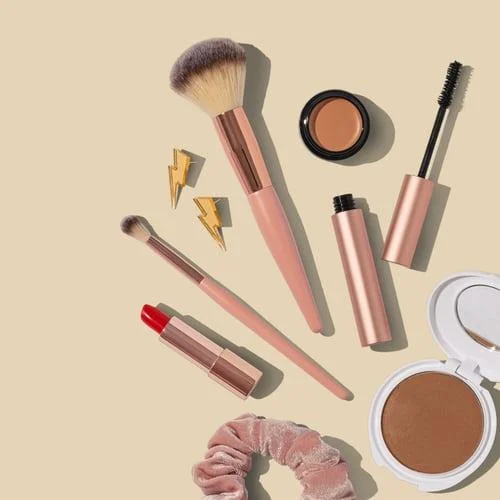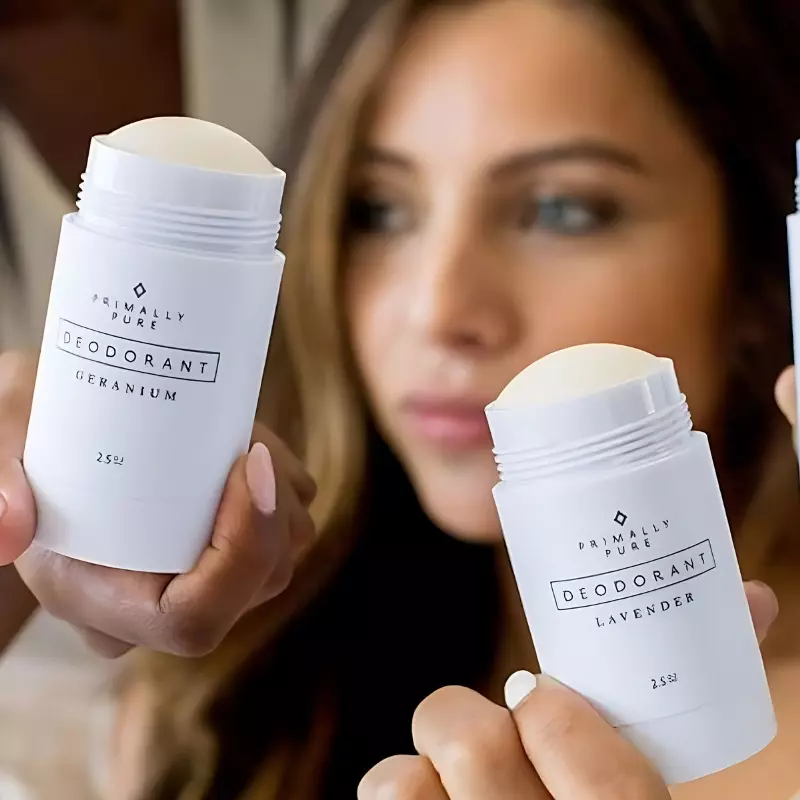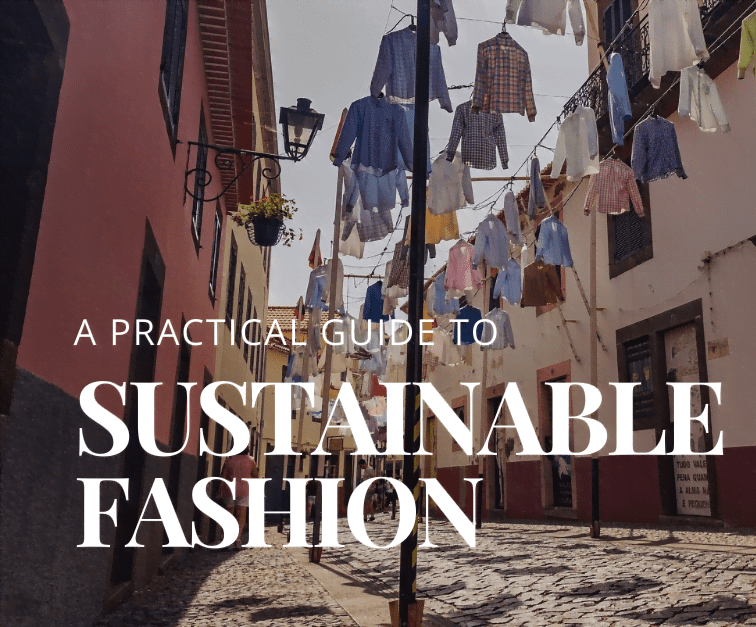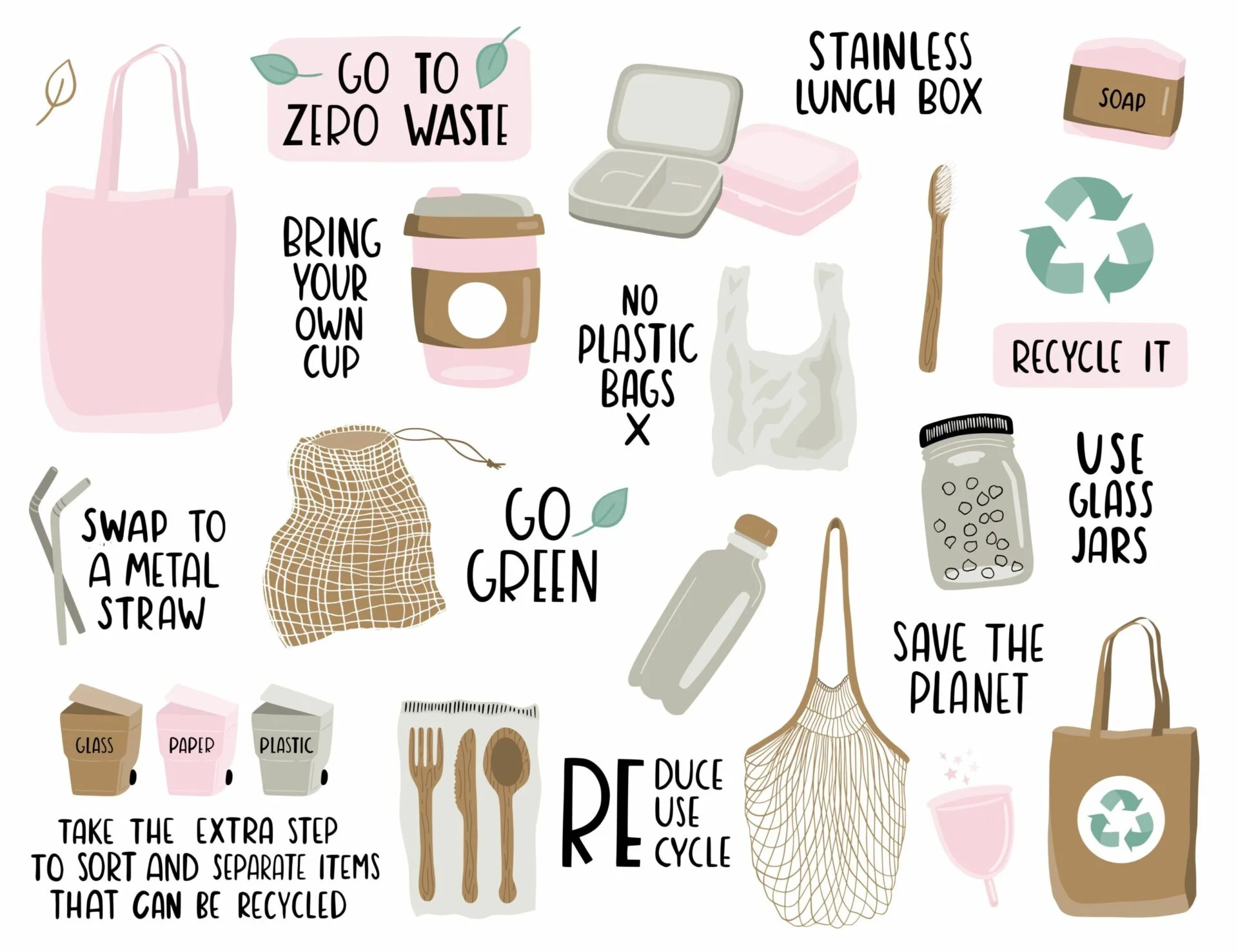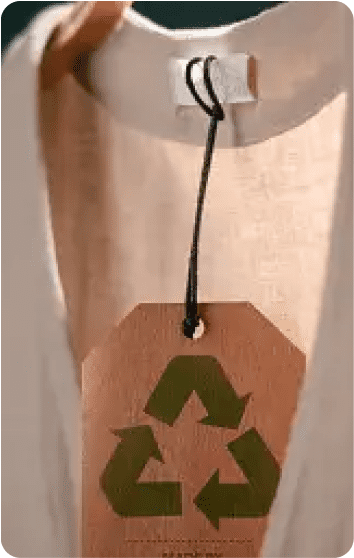The makeup industry is like a two-faced coin. On one side, all we can see is the glitz and glam. The shimmer and glitter of cosmetics blind us. But, if we flip the coin, we can see the actual truth behind the fake facade of this industry. So, is organic makeup the solution to this? Or is there another knight in shining armor that can tackle this problem?
Harmful Effects of the Makeup Industry
The makeup industry is notorious for all the harm it does to the environment and society. We can say that this section reveals the ugly side of the beauty industry.
We can divide the harmful effects caused by makeup into three categories. These are:
- Packaging: The materials which are used to protect and wrap the products
- Contents: The chemicals and ingredients inside the product
- Production: The making or manufacturing process of the product
Packaging
The cosmetic industry has been using plastic packaging for decades. We all know the seriousness of plastic pollution. Let us see how make-up contributes to this pollution problem. Most make-up products use plastic packaging. Often they use cardboard packaging as well. We would think that cardboard is better, right? Yet, that is not true.
The cardboard used by the industry for packaging is non-recyclable. Why? They combine it with either glue or plastic so that it can hold in place. Question is, why can the cosmetic industry not use more minimal packaging? The answer is simple. Aesthetic and beautiful packaging determines the value, or, we can say, the cost of the product.
The more extravagant, and pleasing the packaging is, the brands gain more profit. Consumers have an enormous responsibility here. There would not be any supply of elaborately packaged products if there was not a demand. Unfortunately, many consumers still react well when companies use extravagant and elaborate packaging. They are happy to buy it. However, they overlook the fact that no matter how beautiful it is; the packaging is still single use.
It ends up in landfills and takes up years to decompose. Some say it takes hundreds of years. Some say it takes thousands of years. We know for sure, this is a huge hazard for the environment, regardless of the decomposition period. The sad part is, 70 percent of all cosmetics reaching landfills are not even finished yet. There is still product left inside. If we cannot eliminate single-use packaging, the least we can do is use the entire product. Right?
The production of petroleum-based plastic emits a lot of carbon dioxide and methane. We are sure you are aware of how dangerous these emissions are. These are greenhouse gases that cause global warming and climate change. Only 9 percent of the plastic of the world is being recycled. Imagine heaps more single-use plastic packaging in the landfills. What will happen to that? Where will all of it go?
There is one thing we know for sure. Plastic products in the ecosystem pose enormous problems to wildlife and ocean life. It destroys their natural habitat and is posing extreme threats to various species.

Contents
To understand how the ingredients cause immense harm, we first need to see exactly what these ingredients are. We can call them “The Dirty Dozen”. This includes harmful chemicals, toxins, and fragrances. Now, unless you are a chemistry student, the following names are going to seem like a nightmare to pronounce. However, our aim is to make you familiar with the extent of these ingredients. Take a look:
1. BHA (Butylated hydroxyanisole) and BHT (butylated hydroxytoluene)
2. Coal-tar dyes: p-phenylenediamine and colors listed as “CI” followed by a five-digit number
3. Diethanolamine (DEA), cocamide DEA, and lauamide DEA
4. Dibutyl phthalate (DBP)
5. Formaldehyde releasing preservatives
6. Parabens
7. Parfum (aka fragrance)
8. Polyethylene glycol (PEG)
9. Petrolatum (petroleum jelly)
10. Siloxanes
11. Sodium Laureth sulfate
12. Triclosan
These dirty dozen are present in many products. Let us put this into perspective. In a survey in Canada, over 6000 individuals took part in providing information on more than 12,000 personal care products. The results of the survey were eye-opening. Almost 80 percent of the products contained at least 1 of the dirty dozen ingredient. Over 50 percent had multiple ingredients. Many even could not locate the ingredient list.
How does this cause problem, you ask? Every time we wear makeup, we have to remove it. Now, while removing it, makeup washes down the drain. That means all the chemicals and ingredients are directly going down the drain. These chemicals, toxins, and fragrances within the product, bioaccumulate i.e. they biodegrade. It builds up and as they are synthetics; they have no way of breaking down when they enter our water systems.
Once, in our water systems, they cause serious harm to ocean life. It also harms people completely dependent on water systems for a living. For example, tribal and rural communities. Moreover, when we apply these products to our face, it causes harm to us slowly. This may go unnoticed by several. Over time, these ingredients can accumulate in our bodies and cause extreme damage. It can cause chronic illnesses like cancers.
Also, glitter, used in many cosmetics, contains plastic. Brands use mica in many cosmetic products. For example, eyeliner, lipstick, and foundation. They call it a “natural” substitute for glitter. However, there is a huge issue in how mica is sourced. We’ll touch upon that in the production section. Another ingredient is palm oil. We mostly know palm oil for its wide use in cooking, but it is also a very common ingredient in beauty products. Its intense production causes deforestation and loss of habitat for wildlife.
Production
Let us look at the issue of sourcing mica- a very common ingredient in cosmetics. Today, the major source of this mineral comes from India. India accounts for 60% of global production. It is estimated to have grown by 8.5% during the last two years.
Child labor is a major issue in India’s mica mining business. 86 percent of the country’s mica exports are unregulated. Children in the Indian mica industry make less than a quarter a day. They risk their lives in the unregulated mines to provide minerals for the western market. It is ironic that people in resource and mineral-rich areas of the world are also those most affected by poverty. This is due to human exploitation and corruption.
Another issue is that of the scale of production. The brands produce a lot more than we need. They release various collections, market them beautifully, and manipulate us to buy them. This leads us, the consumers, to buy more than we actually need. Often, we end up using, let alone finishing, only some products. So, where does the rest go? You’re right. Straight to the trash.
Want to read more like this?
Get similar stories and a free sustainability checklist delivered to your inbox.

Like our content?
Get similar stories and a free sustainability checklist delivered to your inbox.

What is Organic Makeup?
To understand what organic makeup is, let us first understand what organic means.
Organic is, put simply, a way of farming. The techniques and processes used in farming do not harm nature. Instead, they provide benefits for wildlife, society, and the natural world. Organic farming ensures and helps sustain the health of:
- Wildlife and nature
- Animals
- Soil
- People
Organic ingredients are prepared and grown without pesticides, chemical fertilizers, Genetically Modified Organisms (GMOs), sulfates, parabens, or antibiotics. However, just because the product is labelled ‘organic’ doesn’t mean it is 100% organic. The United States Agriculture Department’s (USDA) standards for organic agricultural products allow three types of organic labeling:
- 100% organic: Where 100 percent of the product is made from organic ingredients
- Organic: Where at least 95 percent of the product is made from organic ingredients
- Made with organic ingredients: Where at least 70 percent of the product is made from organic ingredients
Organic Makeup VS Natural Makeup
There is a lot of confusion about the difference between organic makeup and natural makeup. Let’s clear that up. We can define a natural product as something that is derived from plant, mineral, or animal by-products.
The term “natural” means that the producers do not use synthetically derived chemical ingredients when creating their products. Instead, scientists design the formula using naturally occurring chemical ingredients. Synthetic means something made by chemical synthesis, especially to imitate a natural product. Regardless of the ingredient source, cosmetics are all formulated using chemical ingredients. It’s important to remember that everything comprises chemicals.
Are Natural and Organic Interchangeable?
Simple answer? No, natural and organic are not interchangeable terms. This, in turn, means that natural makeup and organic makeup should not be used interchangeably.
Natural means any chemical which is derived non-synthetically. So, the source of these chemicals, as mentioned above, can be plants, minerals, or animal byproducts. This means that a natural chemical can also come from plants that are not organically grown.
Is Organic Makeup Better?
The answer for this is not straightforward, unfortunately. It is not scientifically proven that organic makeup, or even natural makeup, is better. We assume natural equals better. This assumption is wrong.
Dr. Linda M. Katz, director of the Food and Drug Administration’s Office of Cosmetics and Colors states, “Consumers should not assume that an ‘organic’ or ‘natural’ ingredient or product would possess greater inherent safety than another chemically identical version of the same ingredient. In fact, ‘natural’ ingredients may be harder to preserve against… contamination and growth than synthetic versions.”
Joan Shaffer, a USDA spokeswoman, stated that, “… people should not interpret even the USDA Organic seal or any organic seal of approval on cosmetics as proof of health benefits or efficacy.“
However, let us give you some reasons to consider using organic makeup.
- Even though it is not proven that organic makeup is better for us, we can see that it poses less environmental harm.
- A good deal of petroleum-based ingredients used in conventional cosmetics needs extensive mining. This mining of petroleum, aluminum or lead, degrades the land and soil. This, in turn, poses a threat to wildlife.
- Natural and organic cosmetics are produced from the cultivation of plants and flowers. The use of a diverse range of natural and organic raw materials requires that the biodiversity of wildlife habitats is protected. It requires sustainable production and preservation of various plants and flower species.
We can see an upsurge in natural and organic makeup with more eco-friendly packaging. Many brands are limiting the use of plastics in packaging. Some have started using eco-friendly packaging instead. Fortunately, some natural and organic beauty brands are going a step further. They are developing innovative formats for a drastic reduction of packaging in their products. This reduces the waste ending up in landfills. - Organic makeup and natural makeup also takes into consideration the ethical and social aspects. Natural and organic beauty brands are often small and medium enterprises (SMEs). The production is at local, regional, or national levels.
- Local production means potentially shorter supply chains. This means that it is more sustainable.
- Through ethical sourcing collaborations, brands support the social and economic development of communities.
They ensure sourcing certain plants and flowers ethically and sustainably.
The Issue of Trust
Many products are marketed as natural and organic makeup nowadays. However, some brands have started using it as a marketing strategy to increase their sales. Some brands try to deceive us by using false organic and natural labels and manipulate us. This is a major issue.
Hence, as a consumer, we have to be very critical of these products that brands are using to mislead us and manipulate us.
Now, this is a real brain scratcher. Who to trust? Who not to trust? The solution, you ask? Do-It-Yourself!
Making cosmetic products ourselves is the best way out. It saves us the hassle of trying to figure out which brand is trustworthy. Also, it gives us a creative outlet to experiment and have fun. This can be a major money saver. Many organic and natural beauty products are expensive. Making it ourselves ensures our wallet stays happy, along with our skin.
Organic Makeup at Home – DIY!

Let’s look at the following recipes to make various beauty products.
DIY Eyeliner and Mascara
We can use this amazing recipe as both an eyeliner and mascara.
Ingredients:
- 1 tbsp shea butter
- 1 tbsp coconut oil
- 1 tbsp activated charcoal
Combine the shea butter, coconut oil, and activated charcoal in a container. Melt it in a double boiler. Slowly add activated charcoal to this mixture. This can be messy, so try not to spill charcoal everywhere. We can assure you that you will break a sweat trying to clean the intense black powder. We don’t want that, right? Store this in a safe container in a cool place. When applying, use an angular brush, or a mascara wand.
DIY Cream Eyeshadow
Ingredients:
- 1 tbsp shea butter
- 1/2 tsp of jojoba oil
- 1/4 tsp beeswax
Melt and combine these ingredients in a double boiler. You can make different colors using different natural powders. For pink, use beetroot powder. For brown, use cocoa powder. For black, use activated charcoal powder. And for green, use spirulina.
Pro-tip: You can add less or more of a particular powder to make different shades of the same color. For example, use less of the charcoal powder to make a grey shade, and more, to make a black shade.

DIY Lip Tint or Cream Blush
Ingredients:
- Beetroot powder
- 2 tsp shea butter
- 1/4 tsp jojoba oil
Combine these in a container. As mentioned above, add more or less of the beetroot powder until you get your desired shade. Use a lip brush to apply it as a lip tint. Use your fingers to apply it as a blush on your cheek. It works wonders!
The Silver Lining
We all saw the various negative effects of the makeup industry on environmental and social aspects. As more awareness has spread about these issues, the popularity of organic makeup and natural makeup has seen a surge.
Though these are wonderful solutions to tackle the environmental and social injustices of the cosmetic industry, another problem has arisen. The misuse of natural makeup and organic makeup labels by brands misleads consumers. However, the silver lining in this situation is the power we, the consumers, hold.
We have several ways to make our makeup through DIY, which we saw above. This is the best solution to making organic makeup at home, on a budget. When consumers realize that at-home makeup recipes are the best alternative, they will make a switch. As a result, brands will have to buck up and become more aware of the consequences of their actions. Slowly, but surely, brands will turn to eco-friendly makeup, and be more transparent.
References:
- https://www.cosmebio.org/en/reports/naturel-vs-organic-cosmetics-whats-the-difference/
- https://www.fda.gov/cosmetics/cosmetics-labeling-claims/organic-cosmetics#Does_FDA
- https://www.soilassociation.org/take-action/organic-living/beauty-wellbeing/what-does-organic-beauty-mean/
- https://www.paulaschoice.com/expert-advice/skincare-advice/skin-care-myths/are-natural-and-organic-ingredients-better-for-your-skin.html
Want to read more like this?
Get similar stories and a free sustainability checklist delivered to your inbox.

Like our content?
Get similar stories and a free sustainability checklist delivered to your inbox.


